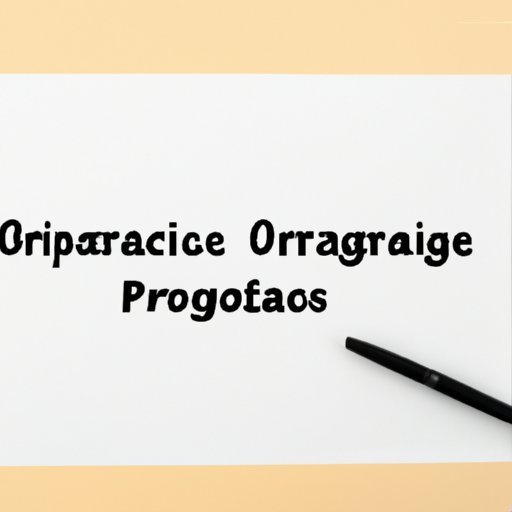
Introduction
Whether you’re a student working on an academic paper or a professional author creating content for publication, avoiding plagiarism is crucial for ethical writing and building a positive reputation. But with the multitude of sources and information available at our fingertips, it can be challenging to ensure that your work is entirely original and does not infringe on the work of others. This article will provide an overview of the definition of plagiarism and its various forms. It will also explore how to properly cite sources, differentiate between common knowledge and original ideas, use plagiarism detection software, and discuss the consequences and benefits of avoiding plagiarism.
What is Plagiarism?
Plagiarism is the act of intentionally or unintentionally using someone else’s work without proper attribution or consent, passing it off as one’s own. Plagiarism can take many forms, including copying and pasting text, paraphrasing without acknowledging sources, and failing to cite quotes, statistics, and ideas in a bibliography.
Plagiarism is not only unethical but also illegal, as it violates copyright law. In academic and professional settings, plagiarism can result in disciplinary action, damage personal and professional reputation, and legal consequences. Examples of plagiarism in different contexts can range from a student copying and pasting text from an online source in an essay to an established author using previously published work for a new publication without proper attribution.
Properly Citing Sources
Properly citing sources is one of the most important ways to avoid plagiarism. Citing sources helps readers to verify facts and information, and it also gives credit to the original authors, recognizing their contributions. There are several methods for citing sources, such as including quotes, paraphrasing, or creating a bibliography.
One of the most common citation styles is the APA (American Psychological Association) style, which includes citing sources in the text with the author’s last name and year of publication. For example, “According to Smith (2010)…” Alternatively, there is the MLA (Modern Language Association) style, which incorporates citations in the text with the author’s last name and the page number. For example, “According to Smith (10)…” Other popular citation styles include the Chicago Manual of Style and Harvard Referencing.
Understanding Common Knowledge and Original Ideas
Differentiating between common knowledge and original ideas is also critical in avoiding plagiarism. Common knowledge refers to widely known facts, including historical events, scientific theories, and geographic locations, that do not require citation. In contrast, original ideas are those that are unique to a particular author or research study, and they must be properly attributed to the original source.
One example of common knowledge is that the United States declared independence in 1776. This does not require citation because it is widely known information. In contrast, if a new research study tests a hypothesis that has not been previously studied, the researchers must attribute their original ideas to their sources.
Plagiarism Detection Software
Plagiarism detection software is becoming increasingly popular to detect plagiarism in academic and professional writing. These tools compare your work to a vast database of previously published work to determine if there are any matching sections. One popular plagiarism detection tool is Turnitin, which is commonly used in higher education settings. Grammarly is another tool that checks your work for plagiarism, in addition to grammatical errors and writing style.
Reading your work aloud can also help to catch instances of plagiarism unintentionally or accidentally. You can also ask someone else to read your work and provide feedback on any instances of plagiarism.
Consequences of Plagiarism
The consequences of plagiarism can be severe, ranging from disciplinary action to legal repercussions and damage to personal and professional reputation. In academic settings, plagiarism can result in a failing grade, suspension, or even expulsion. In professional settings, plagiarism can lead to litigation, termination of employment, or loss of clients.
Numerous high-profile cases of plagiarism have occurred, including the historian Doris Kearns Goodwin and the journalist Fareed Zakaria. In both cases, plagiarism resulted in significant damage to their professional reputation.
Benefits of Avoiding Plagiarism
Avoiding plagiarism benefits not only the author but also their audience and broader society. Using proper citations and acknowledging sources displays your unique voice as the author and increases your credibility as a researcher or professional. Ethical writing practices also foster an environment of academic and intellectual honesty, which can progress society as a whole.
Conclusion
In conclusion, plagiarism is a severe issue with consequences ranging from disciplinary action to legal action and damage to personal and professional reputation. Properly citing sources, differentiating between common knowledge and original ideas, using plagiarism detection software, and understanding the benefits of avoiding plagiarism are all-important in ensuring ethical writing practices. By following these guidelines, you can create original and trustworthy content that benefits both you and your audience.





